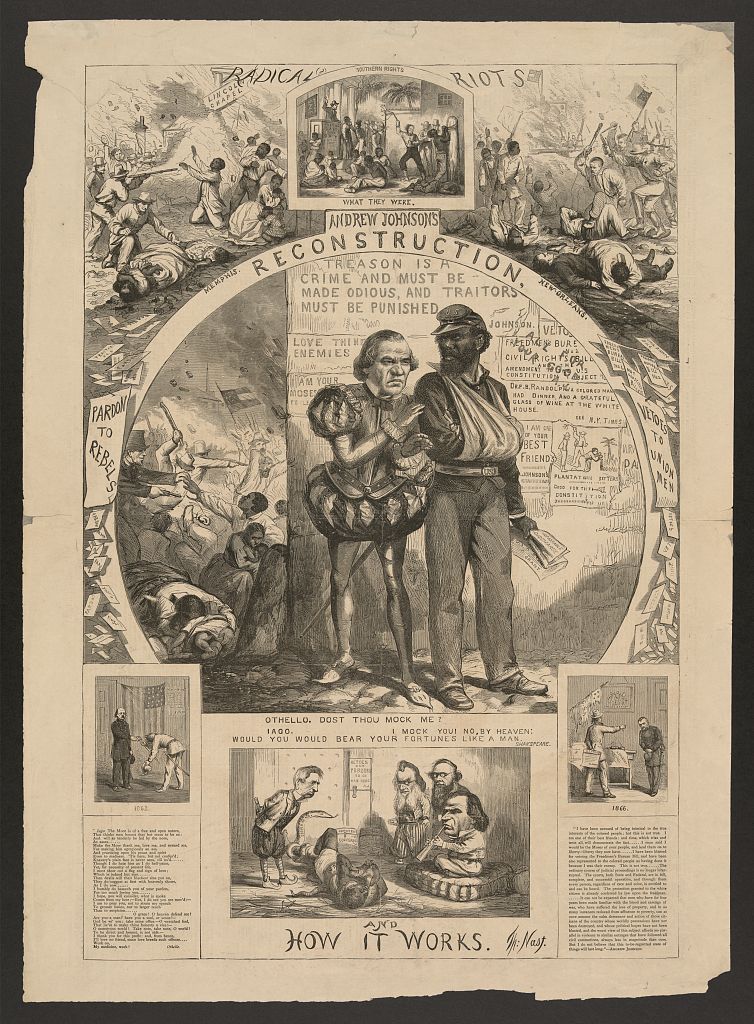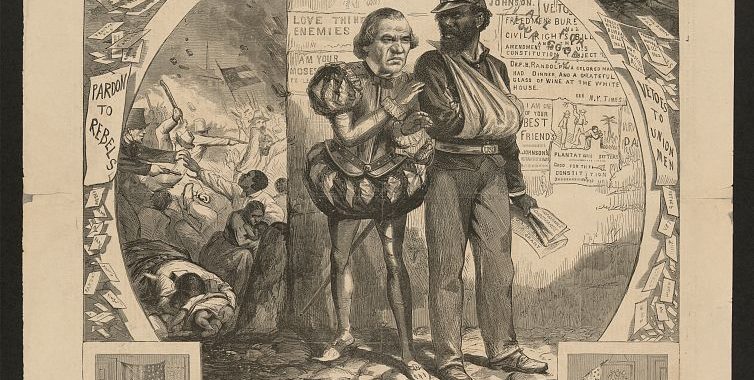There was also the failure of “Radical Reconstruction,” (1867-1872) a strategy developed by the Republican Party of the North aimed to fully integrate African Americans into political life throughout the South. At the time, the strategy was referred to as being “radical” (as was the Republican Party who created it) due to its underlying principle belief that African Americans deserved equal rights in the United States. During Radical Reconstruction, Southern states were required to ratify the 14th and 15th Amendments before they could rejoin the Union. By 1870, all former Confederate States had returned to the Union while enacting some of the most progressive policies the region had seen in its history. This included allowing the participation of African Americans in democracy such as elections to state governments and the U.S. Congress. However, by 1867 many southern states began to push back and responded by forming white supremacy organizations such as the Ku Klux Klan to enact racial terror and intimidation. As the 1870s continued, support for reconstruction throughout the country began to wane. The combination of white intimidation, a significant economic depression in the South, and the Democratic Party winning control of the House of Representatives in 1874, resulted in Reconstruction beginning to fade away. It officially ended with the Compromise of 1876 and the removal of federal troops throughout the South.
It is my argument that Reconstruction failed in the United States and that more importantly, the United States failed African Americans. I believe this failure led to a legacy of oppression and racial violence still felt in the streets of America today, causing me to ask myself yet again: if Reconstruction, and more specifically Radical Reconstruction, would have succeeded—would America be different? If those who incited rebellion against the United States would have been punished accordingly; if reparations were recognized and honored—allowing opportunities such as land for formerly enslaved African Americans and the right to an equal education; if monuments glorifying war criminals and white supremacy were not allowed to be placed on pedestals throughout the South; if symbols of hate were destroyed and forbid for being displayed ever again in the United States—would we in 2020 still see examples of the very same institutionalized racism present in the Black Codes of Reconstruction?
History is complicated and uncomfortable, but it is important. I don’t have the answers on to how to reverse years of revisionist history, generational trauma, and white supremacy. However, I can offer some suggestions on how to move forward. Take some time to learn about our history—us as Americans—in a way you may not have before. Unfamiliar with Reconstruction, Jim Crow, or the Civil Rights era? Add some books to your summer reading list to help supplement knowledge (this article, titled “Understanding and Dismantling Racism: A Booklist for White Readers” is a great place to start). Have children that you want to introduce these topics to? Explore our Online Learning Resources, targeted for various grade levels. But above all—push yourself to learn if you are unfamiliar, and then urge others in your circle to do the same.
And lastly, when we reopen—we encourage you to visit our museum. We’ll be here to help you navigate this uncomfortable history in order to gain tools to help fight for an inclusive future.
Katie Bramell
Director of Museum Experiences
National Underground Railroad Freedom Center


